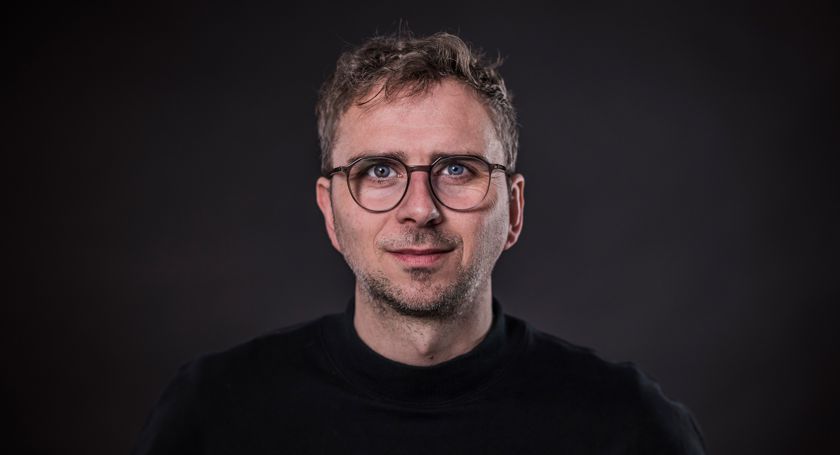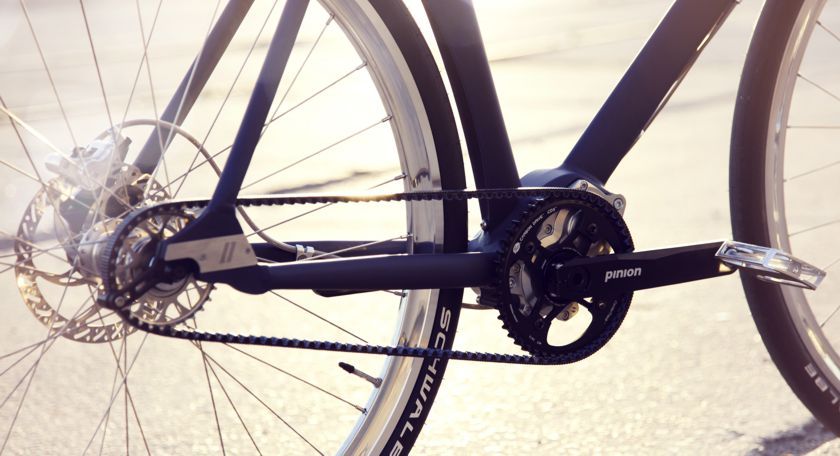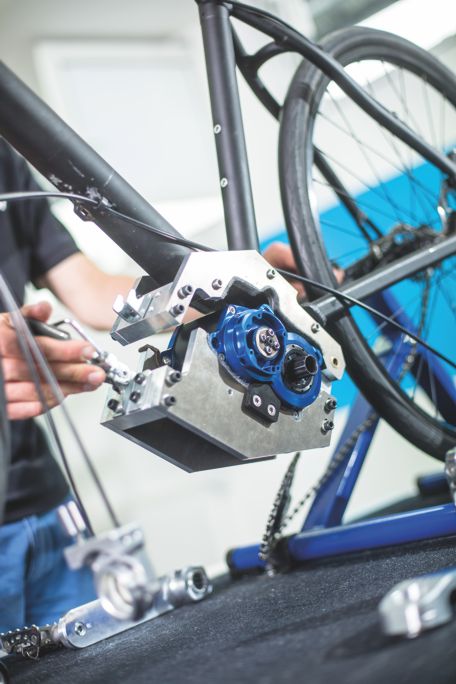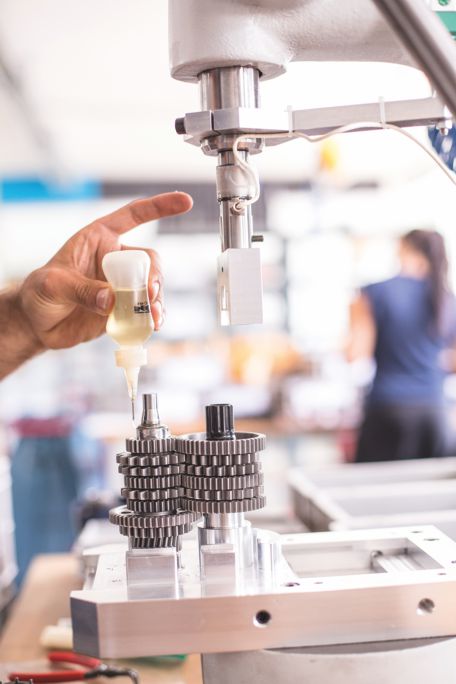Pinion GmbH
In 2006 students Christoph Lermen and Michael Schmitz, who had met while working on the development of the Porsche transmission, decided to design a new type of encapsulated gearshift for bikes that would rank in the same league as automotive technology. The two of them registered their first patent in 2007 and founded Pinion a year later. The first gearbox crossed the Himalayas in 2010, and in 2012 the firm started large-scale production in Denkendorf. Today Pinion sells five types of gearboxes with different transmission characteristics for trekking, mountain, city, cargo and e-bikes.
www.pinion.eu

www.pinion.eu





